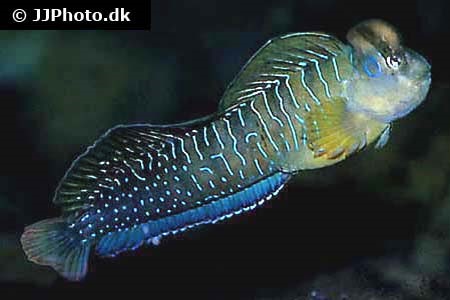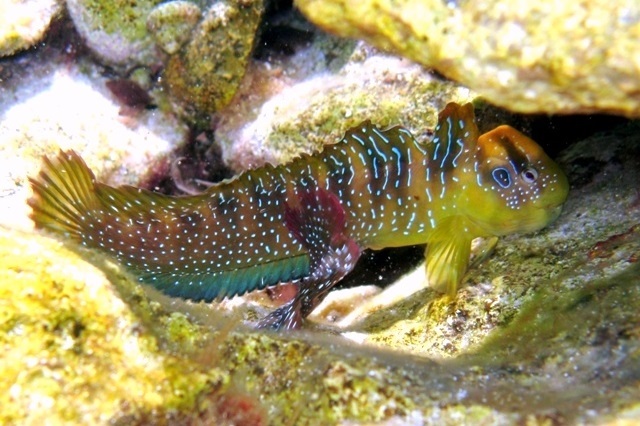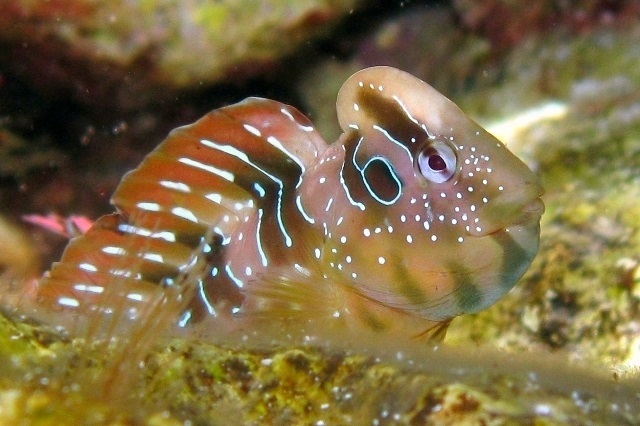Salaria pavo
| Latin name | Salaria pavo |
|---|---|
| Local name | Peacock blenny |
| Family | Blenniidae - Salaria |
| Origin | Mediterranean Sea |
| Max length | 13 cm (5.1") |
| Minimum volume |
400 l (106 gal) |
|---|---|
| Hardiness |
Average |
| Suitable for aquarium |
Suitable for special aquariums |
| Reef safe |
Always reef safe |
| Aggressiveness | Unknown |
| Recommended |
Macroalgea (Eg. seaweed / nori) Microalgea (Eg. spirulina) Small crustaceans (Krill, mysis, artemia...) |
|---|---|
| Mostly |
Zooplankton (Cyclops, pods...) |
There is little available knowledge of this species, so there can be important information missing on this page.
This species lives in water colder than is the norm for a marine aquarium.
The temperature should be between 18 and 24 °C (64 and 75 °F).
There are many differences within the Toothcomb Blennies family, some eat algae whilst others eat zooplankton. There are many families of Blennies, this is merely one of them.
What they have in common are their oblong shape and long dorsal fin. Some species have small "legs" used to move around the bottom.
These Blennies do not normally get very big and are therefore a good choice for both small and large aquaria. They are not often very colorful, but many have a fun personality which many aquarists fall for.
The species of the families Aspidontus and Plagiotremus imitate Cleaner Wrasses and can therefore be difficult to identify.
Jeff Kurtz. 2007. Combtooth Blennies: Bewitching Bottom Dwellers - Tropical Fish Hobbyist - (English)
Scott W. Michael. Reef Aquarium Fishes: 500+ Essential-to-know Species - TFH Publications / Microcosm Ltd. - (English)
Bob Fenner. The True/Combtooth Blennies, Family Blenniidae - Wet Web Media - (English)
Bob Fenner. Blennioids: Blennies and Blenny-Like Fishes - Wet Web Media - (English)




